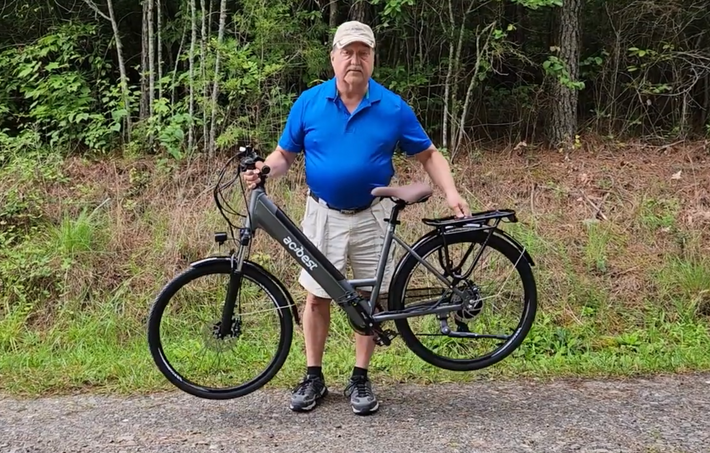Unlock the Secret to Quality E-Bikes That Won't Break the Bank!
The popularity of e-bikes has surged in recent years, becoming a favored mode of transportation for both commuting and leisure activities. With their ability to make cycling accessible and enjoyable for individuals of all fitness levels, e-bikes represent a modern solution to urban mobility challenges. However, a common misconception persists: that quality e-bikes are prohibitively expensive. This notion can deter many prospective riders from exploring the benefits of these electric bicycles. In this article, we aim to debunk this myth by guiding you through the process of finding affordable e-bikes that meet high standards of quality and performance. Whether you're looking to enhance your daily commute or simply enjoy a leisurely ride, there are options available that won’t break the bank.

Understanding E-Bikes: Features and Benefits
When considering an e-bike, it’s crucial to understand the features that contribute to its quality. Key components include the motor type, battery life, frame materials, and additional features like integrated lights or smart technology. Typically, e-bikes come equipped with either hub motors or mid-drive motors. Hub motors, located in the wheel, offer a straightforward design and are often more affordable. In contrast, mid-drive motors provide better weight distribution and efficiency, especially on hills, making them a preferred choice for serious cyclists. Battery life is another vital aspect; a good e-bike should offer a range that allows for at least 20-40 miles on a single charge, depending on your usage and terrain. The frame material also plays a significant role in the bike’s overall weight and durability. Lightweight aluminum frames are common in affordable models, providing a good balance between sturdiness and portability.
Beyond these features, the advantages of e-bikes over traditional bicycles are substantial. They allow riders to tackle longer distances with less physical strain, making them ideal for commuting. Furthermore, the electric assist can help navigate steep inclines or headwinds, ensuring that you arrive at your destination feeling refreshed, not fatigued. Personally, I recall my friend Sarah, who transitioned to an e-bike for her daily commute. She found that not only did she save on transportation costs, but she also enjoyed the ride more, feeling invigorated rather than exhausted by the time she reached her office.
Setting a Budget: What to Expect
When it comes to purchasing an e-bike, understanding the cost factors is essential. Prices can vary widely based on the quality of components, brand reputation, and the features offered. Generally, you can expect to spend anywhere from a few hundred to several thousand dollars. For a quality e-bike that balances performance and affordability, a budget range of $800 to $1,500 is realistic. In this range, you can find models that include decent motors, reliable batteries, and durable frames without cutting corners on essential features.
It's important to balance cost with performance. While it might be tempting to opt for the cheapest option available, investing a little more can lead to a significantly better riding experience. Additionally, consider the long-term value of your purchase; a well-made e-bike may save you money on maintenance and replacement parts down the line. Setting a budget allows you to narrow your options and focus on e-bikes that align with your performance expectations and riding style.
Where to Find Affordable E-Bikes
Finding affordable e-bikes can be a rewarding adventure if you know where to look. Start your search by exploring local bike shops, as they often have knowledgeable staff who can guide you through different options and may even offer seasonal sales. Online marketplaces can also be a goldmine for competitive pricing, with numerous retailers showcasing a wide range of models. Websites dedicated to cycling often feature user reviews and comparisons, which can help you make informed decisions.
Additionally, don’t overlook the potential of second-hand e-bikes. Many cyclists upgrade their models frequently, creating a thriving market for used bikes. Community forums or social media groups focused on cycling can be excellent resources for finding quality second-hand options. Clearance sales from retailers can also be an opportunity to snag a great deal on last year's models. Just remember, when purchasing used, to thoroughly inspect the bike and inquire about its previous usage and maintenance history.
Evaluating Quality: Key Considerations
When assessing the quality of e-bikes, several criteria can guide your decision-making process. Start by examining the warranty offered by the manufacturer, as this can indicate the brand's confidence in their product. A quality e-bike should come with a warranty of at least one year, covering both the battery and the motor. Customer reviews are another essential resource; they provide real-world insights into the performance and durability of the bike you’re considering.
Before finalizing your purchase, take the time to ask pertinent questions. Inquire about the bike's weight, maximum load capacity, and the types of terrain it can handle. Understanding the after-sales service is equally important; a manufacturer that offers reliable support can make a significant difference in your ownership experience. Remember, investing in an e-bike is not just about the initial price tag; it’s about ensuring you’re making a wise investment that meets your long-term cycling needs.
Smart Choices for Affordable E-Bikes
In conclusion, finding an affordable e-bike that doesn’t compromise on quality is entirely achievable with the right knowledge and resources. By understanding the essential features that define a quality e-bike, setting a realistic budget, knowing where to look, and evaluating options carefully, you can make a well-informed purchase. Remember, e-bikes offer an excellent way to enhance your mobility and enjoyment of cycling, and there's no need to settle for subpar models. Take the time to research, consider your specific needs, and embark on your cycling journey with confidence.


